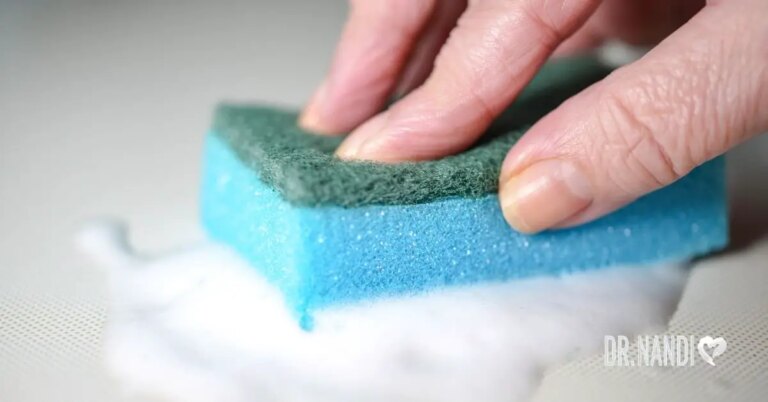Are you one of those people who take pride in having a sparkling clean home? You diligently scrub, mop, and dust every nook and cranny, thinking your cleaning routine is bulletproof against germs. From your trusty kitchen sponge to that beloved welcome mat at your doorstep, you might be surprised to discover just how germ-infested these seemingly harmless objects are.
Did you know the average kitchen sponge is 200,000 times dirtier than a toilet seat? The combination of warmth, moisture, and food particles creates an ideal breeding ground for bacteria, making disinfection essential for maintaining a hygienic household and preventing bacteria in everyday objects.
This comprehensive guide explores the common household items you didn’t know could be germ-infested, along with practical tips to help you enhance your cleaning routine.
Germ-Infested Items and Areas To Never Miss in Your Cleaning Routine
In your next cleaning routine, be sure not to miss these household items that could be harboring germs:
1. Dish Cloths and Sponges:
A study revealed that there are one million bacteria per square inch on an average dishcloth and a staggering 10 million per square inch on a kitchen sponge. This makes them 200,000 times dirtier than a toilet seat.[1,2]
Another study found that 7% of kitchen towels were contaminated with MRSA, the antibiotic-resistant super bacteria. Additionally, coliform bacteria (present in feces) was discovered in 89%, while E. coli was found on 25% of the kitchen towels. [3]
2. Vacuum Cleaner Brushes and Other Cleaning Equipment:
Research indicates that 50% of vacuum cleaner brushes contained fecal bacteria, and 13% were housing E. coli. [4]
Regularly wash or replace brushes, mop heads, brooms, dustpans, and dusters. Don’t forget to perform monthly deep cleans on your dishwasher and washing machine to eliminate lurking microbes.
3. Mobile Phone
Mobile phones have been found to contain 100,000 bacteria, which is 10 times more bacteria than most toilet seats, according to a study by microbiologist Dr. Charles Gerba from the University of Arizona. [5]
The constant companionship we have with our phones, using them at the table and even in the restroom, makes them highly effective carriers of germs and viruses. Use hand sanitizer and wash your hands thoroughly, especially after public transit to minimize the spread of germs.
3. Bath Towels
Towels create an ideal breeding ground for bacteria due to their damp, warm, and absorbent nature, especially when they hang in dark bathrooms. Hands can easily transfer microbes to towels, making the bathroom a particularly risky place for towel use.
Dr. Gerba’s research indicates that nearly 90% of bathroom towels are contaminated with coliform bacteria, and around 14% carry E. coli, which correlates with how often the towels are washed. Similar bacteria are also found on kitchen hand towels, reinforcing the importance of proper hygiene and regular towel washing. [6]
4. Cutting Boards
The average cutting board has about 200% more fecal bacteria than a toilet seat. Keep separate boards for meats and vegetables and wash them thoroughly with hot soapy water between uses. Follow manufacturers’ instructions for proper cleaning and storage of wood or plastic cutting boards. [7]
5. The Kitchen Sink
In a 2017 study published in the Journal of Food Protection, researchers examined 100 kitchens to assess consumers’ knowledge of proper food handling and storage. Shockingly, 15% of homes were found to have E. coli present in their kitchen sinks, indicating potential food contamination. Furthermore, high rates of fecal bacteria were detected in sinks, dish towels, and sponges, with foodborne pathogens present in 45% of the kitchens. [8]
To prevent the spread of bacteria in your sink, use warm, soapy water, and baking soda to clean sponges and cloths.

6. Toothbrushes
Toothbrushes are essential for oral hygiene but can become germ-infested. Researchers found different types of bacteria on toothbrush bristles, which changed depending on how long the toothbrush was used and the user’s age. [9]
The longer a toothbrush is used, the more likely it is to have harmful bacteria on it, especially if the user is older. Regularly cleaning and replacing toothbrushes can help maintain good oral hygiene and reduce the chances of infections.
7. Makeup Brushes
A recent study of a cosmetic tools brand has uncovered alarming bacteria levels on unwashed makeup brushes. Surprisingly, the study found that no matter where the brushes were stored, the amount of bacteria present was either equal to or even higher than that found on a toilet seat. [10]
This accumulation of dirt and bacteria on makeup brushes and sponges can lead to skin breakouts. To maintain good hygiene and prevent skin issues, the American Academy of Dermatology Association recommends cleaning makeup brushes every seven to 10 days. You can use baking soda as a natural brush cleanser to help keep them free from harmful bacteria. [11]
8. Coffee Machines
Coffee machines can become germ-infested due to the presence of moisture, coffee grounds, and spills that accumulate inside the machine after each use. If the machine is not cleaned regularly, these microorganisms can multiply rapidly, leading to potential health risks for the users. Touching the various surfaces and transferring bacteria from the hands to the machine also causes cross-contamination, making it even more unhygienic. [12]
To maintain a germ-free coffee machine, clean it regularly and thoroughly, especially the water reservoir, carafe, coffee grounds holder, and any other accessible parts, with appropriate cleaning agents. This helps prevent the build-up of harmful microorganisms and ensures a safer coffee-making process for everyone.
9. Yoga Mat and Other Exercise Equipment:
Exercise equipment, including yoga mats, can become dirty and germ-infested due to the transfer of bacteria from multiple users’ hands and skin. Even if you’re the only one using the equipment, it’s essential to wipe it down since you might have bacteria on your hands that could contaminate the surfaces. [13,14]
Regularly cleaning the equipment is vital to prevent the accumulation of sweat, skin cells, and debris, creating a healthier workout environment and reducing the risk of infections. Proper handwashing after gym sessions and regular equipment cleaning are essential practices to maintain hygiene and prevent the spread of germs.
The Importance of Effective Cleaning Routines for a Germ-Free Home
Maintaining a regular and comprehensive cleaning routine is crucial for a healthy and hygienic living environment. By establishing a consistent cleaning schedule, we can effectively remove dirt, dust, and grime, preventing the buildup of germs and bacteria in our homes. This regular cleaning not only keeps our living spaces clean and fresh but also ensures the safety of our families.
In addition to keeping our homes tidy, cleaning plays a significant role in reducing the presence of germs and preventing their spread. Harmful bacteria and viruses can survive on various surfaces for extended periods, increasing the risk of infections and illnesses within the household. However, regular cleaning, especially with disinfectants, can effectively eliminate these harmful microorganisms, significantly lowering the chances of transmitting diseases among family members.
To maintain a germ-free home, adopting preventive measures is essential.
In addition to hand hygiene, disinfecting frequently-touched surfaces like doorknobs, light switches, and countertops can significantly reduce germ transmission. The use of suitable disinfectants kills germs on these surfaces, preventing their further spread and contamination of other objects.
Designating specific cleaning days for different areas of the home ensures comprehensive coverage, and setting reminders can help us stay consistent with our cleaning routines.

My Personal RX for a Healthy, Bacteria-Free Home
As a doctor, I can’t emphasize enough the importance of keeping our common household items squeaky clean and free from those pesky bacteria. Let’s roll up our sleeves, grab a sponge, and make our homes a bacteria-free sanctuary with these personalized tips.
- Regularly wash cleaning cloths, sponges, and mop heads in hot water and disinfectant to prevent bacterial buildup.
- Utilize nature’s power with natural cleaning and antibacterial ingredients such as lime, tea tree oil, and baking soda.
- Opt for silicone scrubbers instead of traditional sponges, as they are less prone to bacterial buildup and can be easily cleaned in the dishwasher.
- Regular handwashing with soap and water is one of the simplest yet most effective ways to prevent the spread of germs. By washing our hands frequently, we physically remove germs from the skin’s surface, while the soap’s chemical properties break down the virus’s outer layer, rendering it inactive.
- Maintaining optimal liver health. The Detox Bundle provides specialized nutrients and botanical extracts to support liver detoxification and overall well-being.
- Get your FREE copy of our Toxic Ingredient Guide and make informed choices when selecting household cleaning items. Avoid harmful ingredients that can negatively impact your health and take the first step towards a healthier future.
By prioritizing cleanliness and following scientifically proven preventive measures, we can create a safe and healthy living space for ourselves and our loved ones. A germ-free home not only promotes better health but also provides peace of mind, knowing that we are doing our best to protect our family’s well-being.

Sources:
- Mosley, B. M. (2018, February 21). The dirtiest place in your kitchen might surprise you. . . BBC News. https://www.bbc.com/news/health-43131764
- Williams, A., & Williams, B. A. (2012, November 20). The kitchen sponge is 200,000 times dirtier than a toilet seat – and could even lead to PARALYSIS. Mail Online. https://www.dailymail.co.uk/health/article-2235650/The-kitchen-sponge-200-000-times-dirtier-toilet-seat–lead-PARALYSIS.html
- Gerba, C. P. et. al. (2014). Occurrence in Kitchen Hand Towels. Food Protection Trends, 34(5), 312-317. https://www.foodprotection.org/files/food-protection-trends/Sep-Oct-14-Gerba.pdf
- 10 surprising places where germs lurk. (2008, May 26). NBC News. https://www.nbcnews.com/health/health-news/10-surprising-places-where-germs-lurk-flna1c9459090
- Why your cellphone has more germs than a toilet | College of Agriculture and Life Sciences | The University of Arizona. (n.d.). https://cals.arizona.edu/news/why-your-cellphone-has-more-germs-toilet
- Gerba, C. P. (2014, September 1). Bacterial occurrence in kitchen hand towels. University of Arizona. https://experts.arizona.edu/en/publications/bacterial-occurrence-in-kitchen-hand-towels
- Parry, L., & MailOnline, B. L. P. F. (2014, December 17). Chopping boards harbour 200% more faecal bacteria than toilet seats. Mail Online. https://www.dailymail.co.uk/health/article-2876048/The-hidden-dangers-lurking-kitchen-Chopping-boards-harbour-200-faecal-bacteria-toilet-seats-potatoes-leeks-food-poisoning.html
- Borrusso, P., & Quinlan, J. J. (2017). Prevalence of Pathogens and Indicator Organisms in Home Kitchens and Correlation with Unsafe Food Handling Practices and Conditions. Journal of Food Protection, 80(4), 590–597. https://doi.org/10.4315/0362-028x.jfp-16-354
- Frazelle, M., & Munro, C. L. (2012). Toothbrush Contamination: A Review of the literature. Nursing Research and Practice, 2012, 1–6. https://doi.org/10.1155/2012/420630
- Collections, S. (2023). Makeup brush storage areas could be dirtier than your toilet. Spectrum Collections. https://www.spectrumcollections.com/en-ph/blogs/the-latest/makeup-brush-storage-areas-could-be-dirtier-than-your-toilet
- How to clean your makeup brushes. (n.d.). https://www.aad.org/public/everyday-care/skin-care-secrets/routine/clean-your-makeup-brushes
- Nasty germs may be lurking in your coffee maker. (2015, May 11). CBS News. https://www.cbsnews.com/news/nasty-germs-may-be-lurking-in-your-coffee-maker/
- Goldhammer, K. A., Dooley, D. P., Ayala, E., Zera, W. C., & Hill, B. L. (2006). Prospective study of bacterial and viral contamination of exercise equipment. Clinical Journal of Sport Medicine, 16(1), 34–38. https://doi.org/10.1097/01.jsm.0000181436.41268.1f
- Palmer, B. K. (2017, September 27). Should you wipe down your gym yoga mat to avoid germs? BBC News. https://www.bbc.com/news/uk-41411558




















